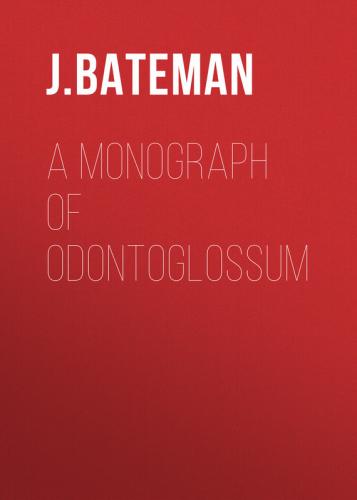I have already referred to Dr. Cauty's success in the treatment of the subject of the present Plate, but his skill and care are equally conspicuous in the management of a miscellaneous collection of Orchids, which he contrives to grow under circumstances such as would have deterred most men from attempting to grow any plants at all. The house in which he lives is in the very centre of Liverpool, and has in its rear a small back court, such as is usually devoted to dustbins and coal-holes, but where Dr. Cauty has found space for three little Orchid-houses of different temperatures in which the Orchids of different climes are perfectly at home. I can really see no reason why in all large towns – in London more especially – Dr. Cauty's example should not be extensively followed, and the luxury of an Orchid-house be thus brought within the reach of many who now consider it quite beyond their grasp.
Dissections. – 1. Lip, seen sideways; 2. Ditto, seen in front: both magnified.
Plate V.
ODONTOGLOSSUM PESCATOREI, Lindley
O. (Isanthium, Lindl.) pseudobulbis ovatis lævigatis nebulosis diphyllis, foliis loratis planis basi angustatis paniculâ amplâ erectâ multiflorâ 3-plo brevioribus, bracteis minutis, floribus membranaceis, sepalis ovato-oblongis apiculatis leviter undulatis, petalis conformibus latioribus, labello cuspidato subpandurato basi denticulato, cristæ lamellis lateralibus distantibus cartilagineis laceris lineis duabus divergentibus apice denticulatis interjectis, columnæ brevis alis brevibus cuneatis laceris. (Lindl. Fol. Orch., quibusdam mutatis.)
Odontoglossum Pescatorei, Lindley, in Paxton's Flower Garden, iii. t. 90; Pescatorea, t. 1; Warner's Select Orchidaceous Plants, t. 25.
Odontoglossum Nobile, Reichenbach fil. in Linnæa, 22, 850.
Habitat in New Granada, Province of Pamplona, at the height of from 5000 to 6000 feet, Funck and Schlim.
Pseudobulbs from 2 to 3 inches long, of an ovate form, glossy, and mottled with dark brown, usually bearing 2 lorate Leaves, which are from 6 inches to a foot long, narrowed at the base and sharp at the end, much shorter than the tall upright branched Panicle, which sometimes rises to the height of 3 feet, and bears from 6 to 60 membranous Flowers of a peculiarly delicate texture. Bracts very small. Sepals ovate-oblong, apiculate, slightly waved at the edges, an inch long, white with streaks of rose-colour. Petals similar in form and texture to the sepals, but broader and more curled at the edges, of the purest white. Lip inclining to fiddle-shape, pointed, but with the point invisible when looked at in front; towards the base are two short upright tubercles that pass forward into plates diverging from each other, and toothed in front. On either side are two pseudo-wings, irregularly indented, and, like the plates, of a beautiful gold colour, streaked with red. The rest of the lip is white, with the exception of a few irregular blotches of crimson, the number and size and disposition of which vary considerably in different individuals. Column short, with short wedge-shaped Wings, a little indented at the edges.
This lovely plant was discovered in the year 1847 by MM. Funck and Schlim when on a botanical mission to New Granada, in the service of M. Linden. According to its discoverers, it is not unfrequently met with in the provinces of Pamplona and Ocaña, at an elevation above the sea-level of about 5000 feet, inhabiting the oak forests which – where the climate is mild – clothe the eastern slopes of the glorious Cordillera.
Конец ознакомительного фрагмента.
Текст предоставлен ООО «ЛитРес».
Прочитайте эту книгу целиком, купив полную легальную версию на ЛитРес.
Безопасно оплатить книгу можно банковской картой Visa, MasterCard, Maestro, со счета мобильного телефона, с платежного терминала, в салоне МТС или Связной, через PayPal, WebMoney, Яндекс.Деньги, QIWI Кошелек, бонусными картами или другим удобным Вам способом.
